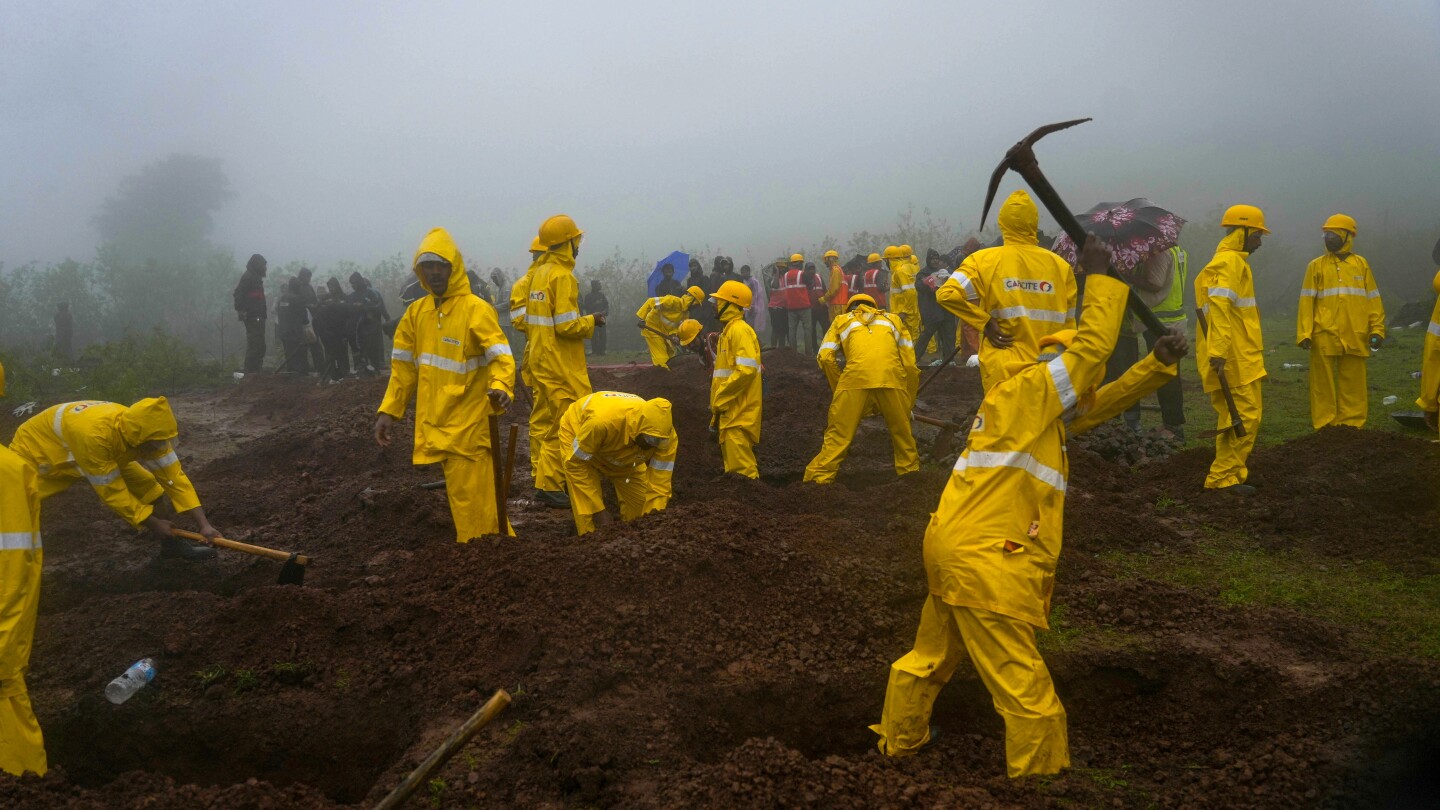RAIGAD, India (AP) — Rescue efforts resumed Friday after an overnight halt in India’s western Maharashtra state where a landslide triggered by torrential rains killed at least 16 people, with many others feared trapped under debris, officials said.
Scores of rescuers and trained trekkers have been deployed to find people trapped by the landslide, which occurred late Wednesday night, the state’s deputy chief minister Devendra Fadnavis tweeted. Harsh weather conditions have hampered rescue efforts and authorities have sent in medical teams to help the injured, he added.
Search operations were suspended on Thursday night due to heavy rainfall plus the threat of further landslides in the dark, said a statement by the National Disaster Response Force.
While 75 people have been rescued, many others are still stuck, an official told the Press Trust of India news agency.
The landslide hit the Irshalwadi village in Raigad district and buried 17 of the 50 houses there.
The hilly terrain has made the task of rescuers difficult as heavy equipment to remove the rubble couldn’t be moved easily. From the hill base, it takes about one-and-a-half hours to reach Irshalwadi because it is not linked by paved roads.
India’s weather department put Maharashtra on alert as the state has been lashed by incessant rains this week. The downpours have disrupted life for many in the state, including in the capital, Mumbai, where authorities on Thursday shut schools.
Local train services have been disrupted with water flowing inside stations and over tracks, local media reported.
Record monsoon rains killed more than 100 people in northern India over the last two weeks, officials said, as the downpours caused roads to cave in and homes to collapse.
Monsoon rains across the country have already brought about 2% more rainfall this year than normal, India’s weather agency said.
India regularly sees severe floods during the monsoon season, which runs between June and September and brings most of South Asia’s annual rainfall. The rains are crucial for rain-fed crops planted during the season but often cause extensive damage.
Scientists say monsoons are becoming more erratic because of climate change and global warming, leading to frequent landslides and flash floods in India’s Himalayan north.

